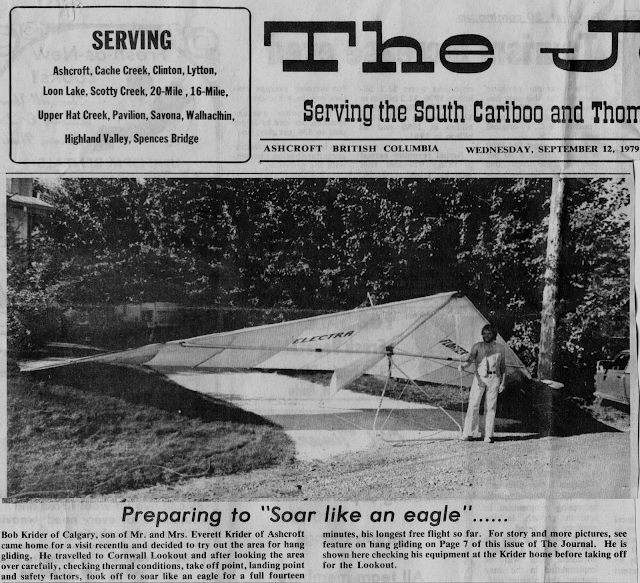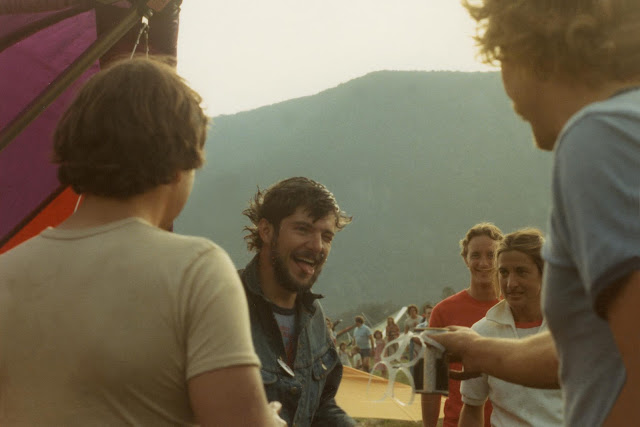"My pioneering flight off Cornwall in 1979, after one year of flying. That was a rush. Sooooo high. I yelled insults at the tiny little cows below me for being stuck to the ground. The flight was heavily covered by the local press (front page news).
I got rid of that huge Electra Flyer Floater, which liked to spin at the slightest provocation. Moved to England in 1980. By then I had a couple hours total airtime, so figured I was ready for the new double surface fad, and upgraded to a double surface Airwaves Comet in 1981. I only destroyed one Comet before I got the hang of it."
 |
| Ashcroft Journal 1979-09-12 pg.1 |
 | |
| Ashcroft Journal 1979-09-12 pg.2 |











































